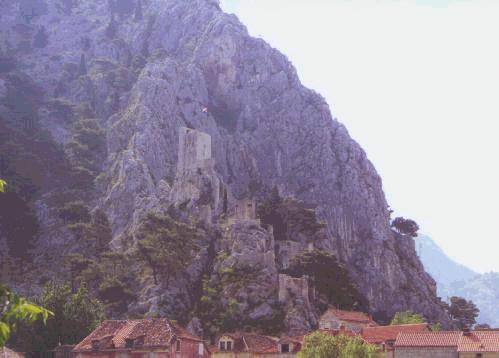- Home
- About
-
Travel
-
Features
- Dyrrachion1081
- Normans in the Balkans
- Manolada 1316
- Kosovo 1389
- Castles on the Danube
- Late Medieval Bosnian Army
- Doboj 1415
- Wallachian and Moldovan troops of the Napoleonic wars
- Anchialos 917
- Slovenian Borderlands
- The Zadruga and the Military Border
- Cretan War in the Adriatic
- Salonika 1916
- Uskoks of Senj
- Siege of Klis 1537
- Eugene in the Balkans
- Moldavian Surprise 1711
- Austro-Turkish War 1737-9
- Militargrenze
- Invading Ottoman Turkey
- Siege of Ragusa 1814
- Russo-Turkish War 1806-12
- Serbian Uprising 1815
- Ali Pasha
- Ottoman Army 1826
- Aleksinac 1876
- Shipka Pass
- Slivnitsa 1885
- Romanian Army 1878
- Austrian forts 19thC
- Kumanovo 1912
- Catalca Lines
- Adrianople 1912-13
- Kajmakcalan 1916
- The other 1918 campaign
- Macedonia air war WW1
- War of the Stray Dog
- Royal Yugoslavian armed forces
- Blunder in the Mountains
- Romanian SS
- Gebirgsjager in the Balkans
- Knights Move 1944
- Vis during WW2
- HLI in the Adriatic
- Adriatic Cruel Seas
- Dalmatian Bridgehead
- Cyprus 1974
- Transnistrian War
- Ottoman Navy Napoleonic wars
- Medieval Balkans
- Balkan lockdown quiz >
- Reviews
-
Armies
- Ancient Greeks
- Pyrrhic army of Epirus
- Dacian wars
- Goths
- Late Roman
- Comnenan Byzantine Army
- Normans
- Serbian medieval
- Albanian medieval
- Wallachian medieval
- Bosnian Medieval
- Catalan Company
- Polish 17C
- Austrian Imperialist
- Ottoman
- Austrian 18thC
- Russian Early 18thC
- Ottoman Napoleonic
- Greek Revolution
- 1848 Hungarian Revolution
- Russian Crimean war
- Romanian Army of 1877
- Ottoman 1877
- Russian 1877
- Balkan Wars 1912-13
- Macedonia WW1
- Greece WW2
- Italian Army WW2
- Gebirgsjager WW2
- Hungary WW2
- Turkey WW2
- Soviet Union WW2
- Bulgaria WW2
- Turkish Korean War Brigade
- Balkan Wars 1990s
- Links
- Books
Dalmatian Bridgehead
|
When researching in the National Archives, I came across a WW2 file (WO201/1582) describing a planned attack on the Dalmatian coast, which would make a good scenario for the Warlord Games ‘Cruel Seas’ small boat wargame rules.
The plan, codenamed ‘Knockholt’, is dated December 1943 and refers to a joint British and Partisan operation to not just raid the coast, but to establish a bridgehead on the Dalmatian coast between Split and the River Neretva. Options included the small harbours at Omis, Baska Voda, Makarska and Podgora. These are places that modern tourists to Croatia may be familiar with. Omis has a fine castle, and the Makarska Riviera is packed full of hotels. Anyone who has visited this coast might wonder why establish a bridgehead there. The coast is dominated by mountains with limited access to the hinterland. In another file, I came across a memo from Middle East Command that refers to a Partisan plan to establish a bridgehead at Dubrovnik. They opposed this because this would primarily access Montenegro, rather than Bosnia. The concern was that the Partisans would focus more on the Chetniks there than the Germans. The main attack would be carried out by Tito's Partisans, not earlier than 15 February 1944, over 15 days. There would be a diversionary attack by British Commandos against Split, Sibenik or Dubrovnik. Air superiority was regarded as essential, both to neutralise enemy airfields and to provide fighter cover. All the shipping and equipment would come from the allied base on the island of Vis, via Bari in Italy, possibly with some dumping of supplies on nearby islands. Hvar and Brac would be the obvious choices. Equipment included 12 armoured cars, 96 lorries, US 75mm mountain guns, mortars and other support weapons. Needless to say, this would require a large number of landing craft as well as covering naval forces. The plan assumed one of these small harbours would be captured. It is not clear to me if Operation Knockholt was actually carried out. Michael McConville, who was on Vis at the time, doesn’t mention it in his memoirs A Small War in the Balkans). The type of initial raid he describes as happening during this period appeared to be very limited reconnaissance operations. Certainly nothing on the scale described in the planning documents. Fitzroy MacLean in his early liaison trips to the mainland describes Baska Voda as being in Partisan hands, but again no mention of this operation. Sadly, MacLean's memoirs rarely have any dates. Another liaison officer, Deakin, also doesn't mention it. Neither is there any reference in naval history. Christopher Chant’s ‘Codenames’ website describes it as ‘Implemented’. So, it may be that as a mostly Partisan operation, one of many, it just wasn't covered by British writers. Either way, it makes a decent scenario. |




